Build strength and boost your metabolism with this eight-move menopause HIIT workout
This high-intensity routine helps overcome fatigue, strengthens your core, and improves your mood during menopause
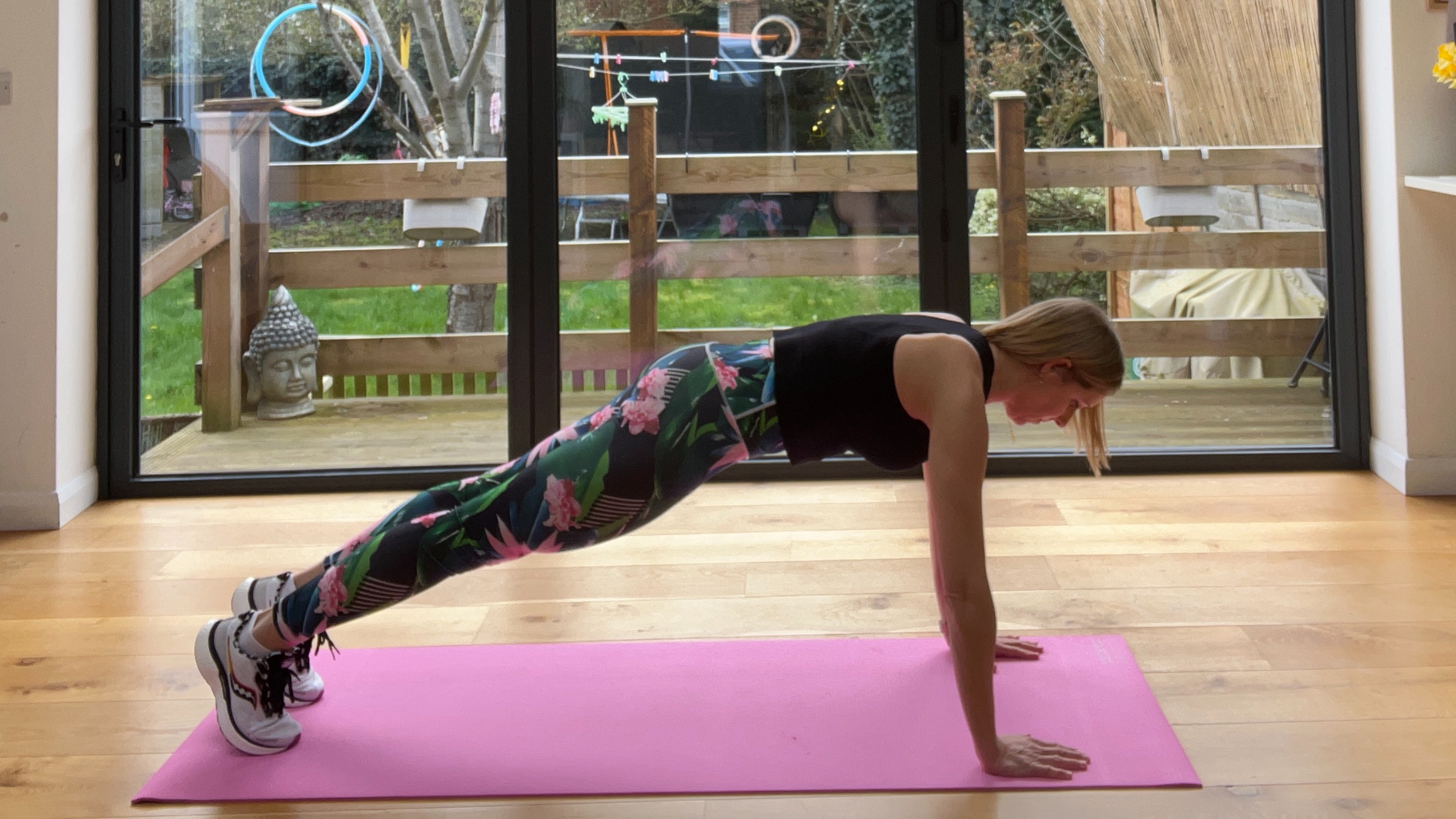

Taking on a menopause HIIT workout can be a great way to manage symptoms like fatigue and low mood. You may feel more tired than usual, which makes it hard to find time, motivation, or energy to exercise.
You don't need to spend hours at the gym to see the benefits of regular exercise, though, as high-intensity interval training (HIIT) routines are an effective companion to the best menopause supplements and only take 15 minutes.
The aim is to train in short, intense bursts with minimal rest. This helps raise your heart rate, work muscles all over your body, and boost your metabolism, all wrapped in a time-efficient routine to boost your energy and improve your wellbeing.
As a personal trainer, I know those benefits make a menopause HIIT workout worth your time, but there's another reason. According to a review published in Experimental Physiology, HIIT helps lower visceral fat (around your organs), which often builds up during menopause.
With that in mind, I've put together an eight-move menopause HIIT workout that you can do anywhere, only takes 15 minutes, and will boost your mood, improve your cardio fitness, and build strength.
Menopause HIIT workout routine
This routine is designed to be efficient but intense, so you'll do each exercise for 30 seconds, rest for 20 seconds, then start the next move. Do all eight moves twice to begin, gradually increasing to three sets as you get stronger.
Make sure you spend 5-10 minutes doing a warm-up to prepare mentally and physically for exercise. Cooling down at the end with some low-intensity exercise is just as vital, as it helps reduce your heart rate, encourages relaxation, and can soften post-workout soreness.
Get the Fit&Well Newsletter
Start your week with achievable workout ideas, health tips and wellbeing advice in your inbox.
Menopause HIIT workout plan
| Exercise | Time | Rest | Sets |
|---|---|---|---|
| Lunge hops | 30 seconds | 20 seconds | 2 |
| Broad jumps | 30 seconds | 20 seconds | 2 |
| Curtsy lunges | 30 seconds | 20 seconds | 2 |
| Squat jumps | 30 seconds | 20 seconds | 2 |
| Mountain climbers | 30 seconds | 20 seconds | 2 |
| Ice skaters | 30 seconds | 20 seconds | 2 |
| Plank walkouts | 30 seconds | 20 seconds | 2 |
| Up-down plank | 30 seconds | 20 seconds | 2 |
1. Lunge hops
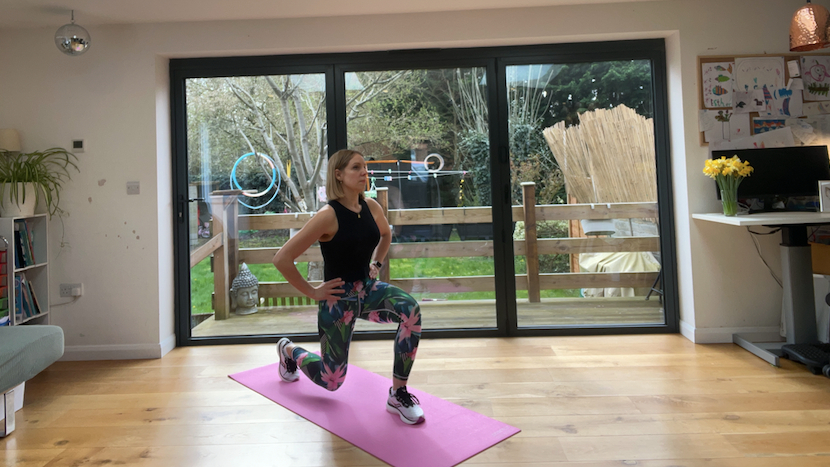
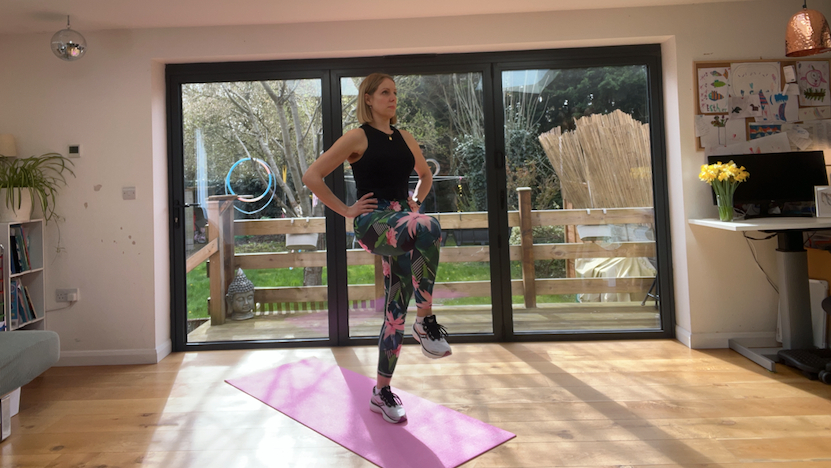
- Start standing with your feet together, then step back into a reverse lunge with the right leg. Your right knee should be parallel to the floor or as close as possible.
- Push through your heel as you bring your knee into a hop, jumping off the floor with your left leg as you come up.
- Swap legs and repeat for 30 seconds.
2. Broad jumps
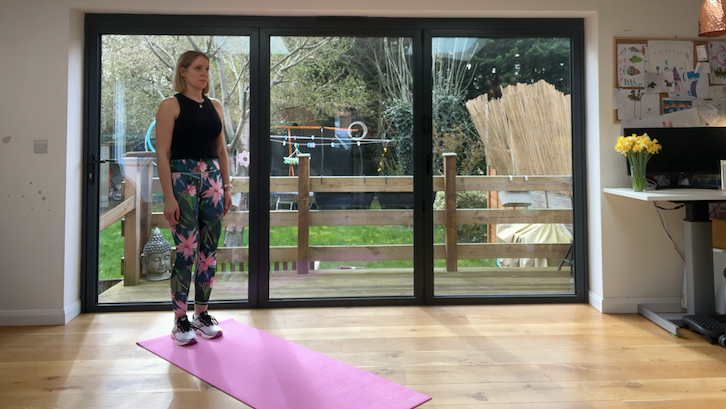
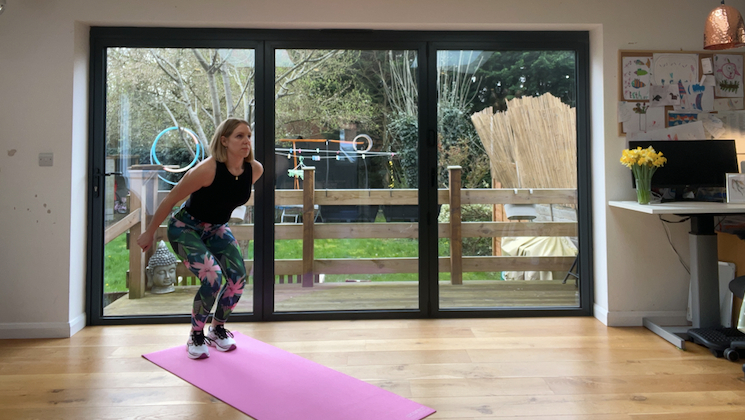
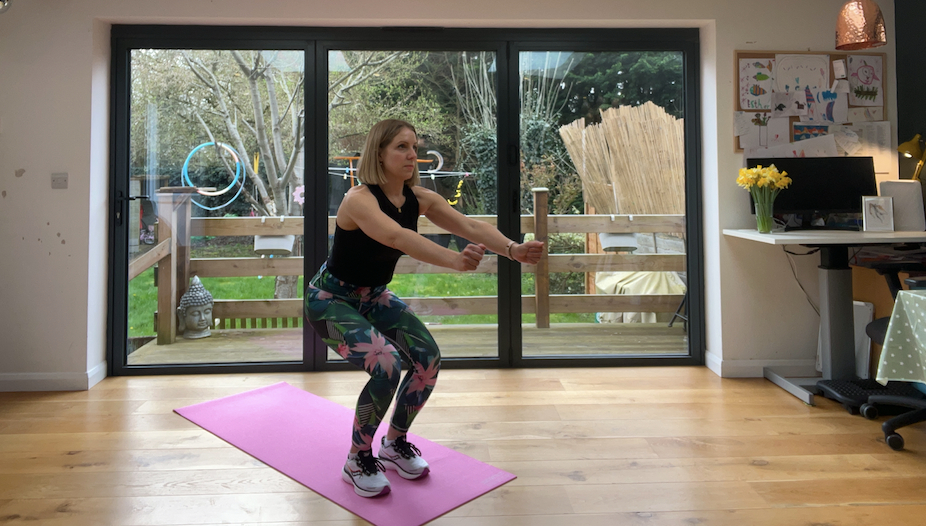
- Stand with your feet shoulder-width apart, then bring your hips back and bend your knees to sit back into a half squat.
- Explode into the air, pushing off from your toes, and swing your arms forward and straight up above your head.
- Jump as high and as far forward as possible, then quickly shuffle back to the start position.
- That's one repetition. Repeat for 30 seconds.
3. Curtsy lunges
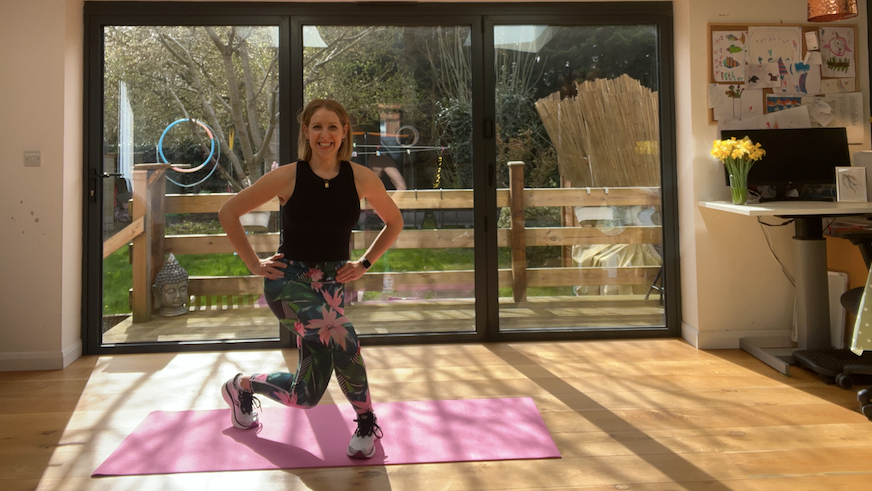
- Stand with feet hip-width apart and shoulders back, and tense the muscles around your stomach to engage your core.
- Putting your weight into your right foot, step back with your left foot behind your right foot — almost as if you're curtsying.
- Bend your knees and lower your hips until your left thigh is almost parallel to the floor.
- Push slowly back up and return to the initial standing position.
- Repeat on the other side and alternate for 30 seconds.
4. Squat jumps

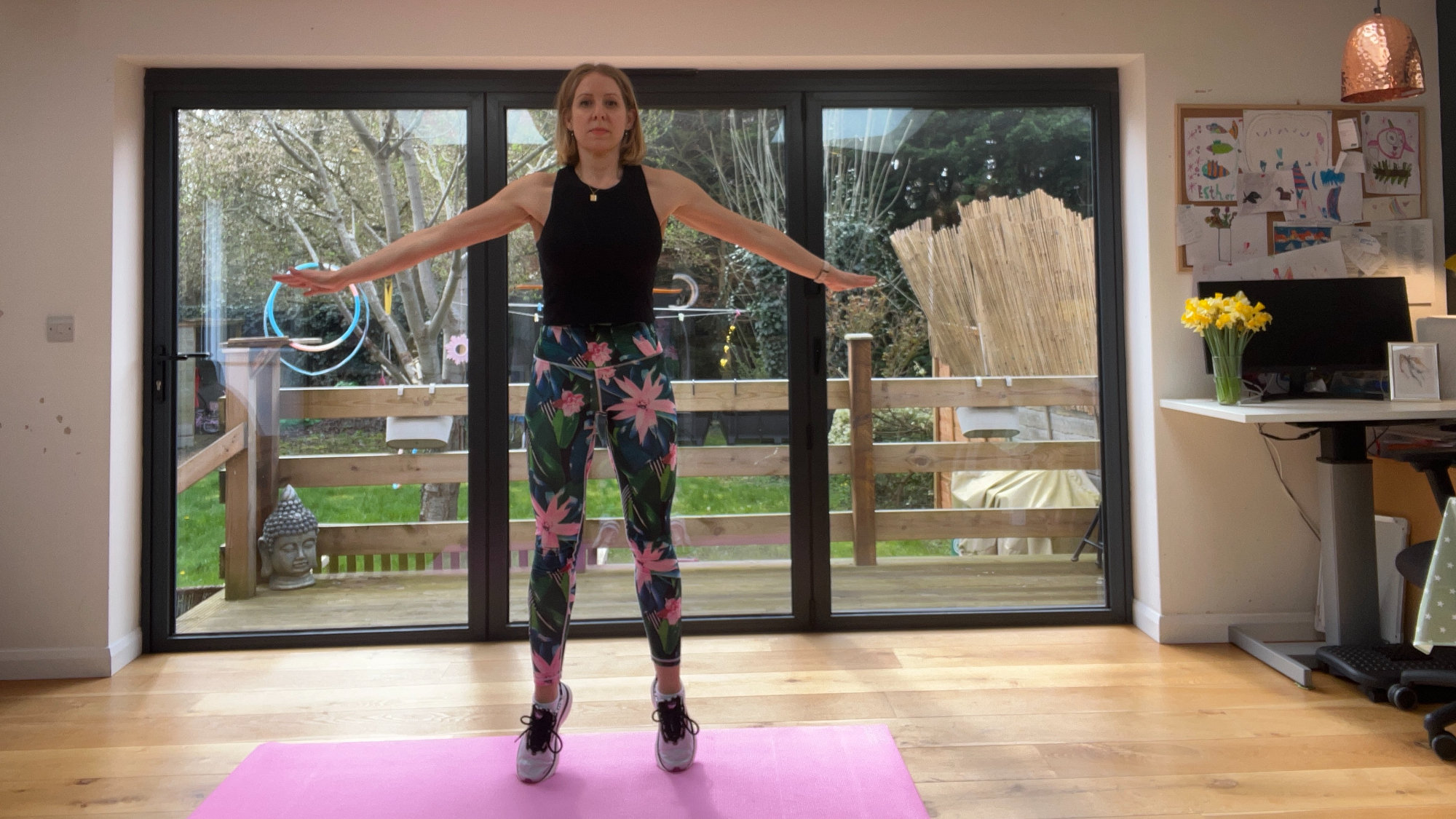
- Stand with your feet shoulder-width apart and knees slightly bent.
- Bend your knees and press your hips back as if you're going to sit down on a chair.
- Push through your heels and squeeze your glutes (the muscles around your buttocks) as you jump out of the squat.
- Land back in the starting position with your feet shoulder-width apart.
- Repeat for 30 seconds.
5. Mountain climbers
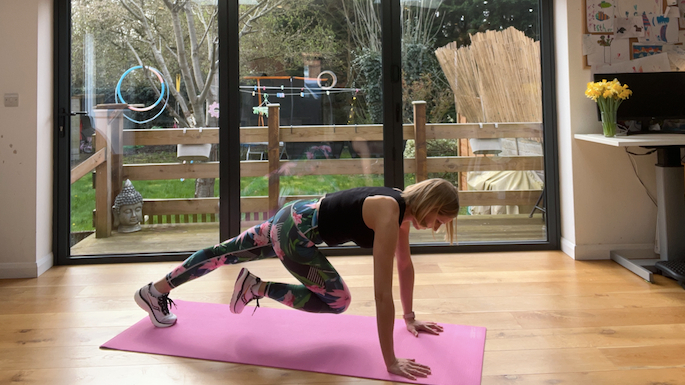
- Start in a plank position, with your hands shoulder-width apart, your back flat, and your shoulders above your wrists.
- Tense the muscles around your stomach to engage your core, and pull your right knee diagonally towards your chest.
- Return to the plank position with your right foot back on the floor.
- Repeat on the other side and alternate quickly for 30 seconds.
6. Ice skaters
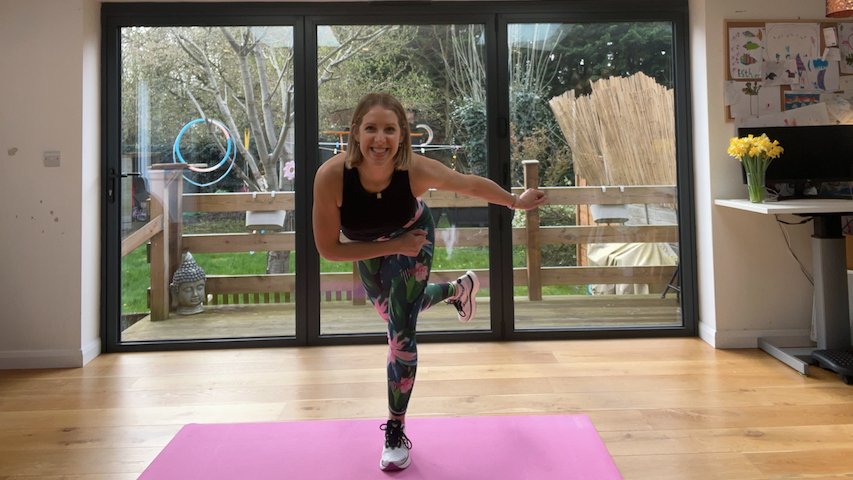
- Stand tall with your arms by your side and legs slightly wider than shoulder distance apart.
- Hinge at your hips and lean forward as you bring one leg behind you into a reverse lunge with your front knee at 90 degrees.
- Swing your arms in front of your bent knee and leap your back leg forward to switch sides in a skating motion.
- Alternate your arms as you switch sides like a speed skater.
7. Plank walkouts

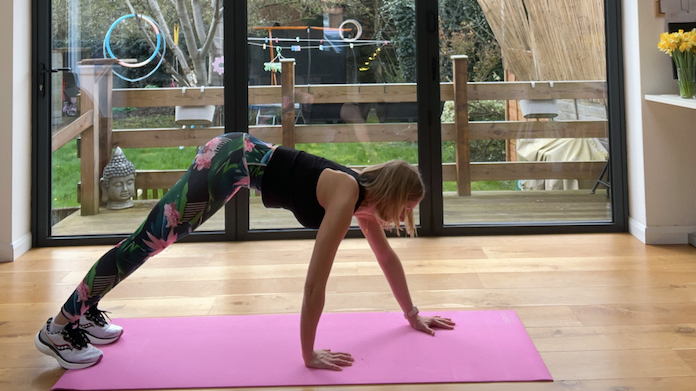
- Start in a plank position, with your hands shoulder-width apart, your back flat, and your shoulders above your wrists.
- Tense your stomach muscles to engage your core and create a straight line from your back down to your feet.
- Your feet should be slightly wider than hip-distance apart.
- Slowly walk your hands forward, maintain a straight back, and don't let your hips or tummy drop toward the floor.
- Once you've walked out as far as possible without impacting your posture, pause, then walk your hands back to the start position.
- That's one repetition. Repeat this pattern for 30 seconds.
8. Up-down plank

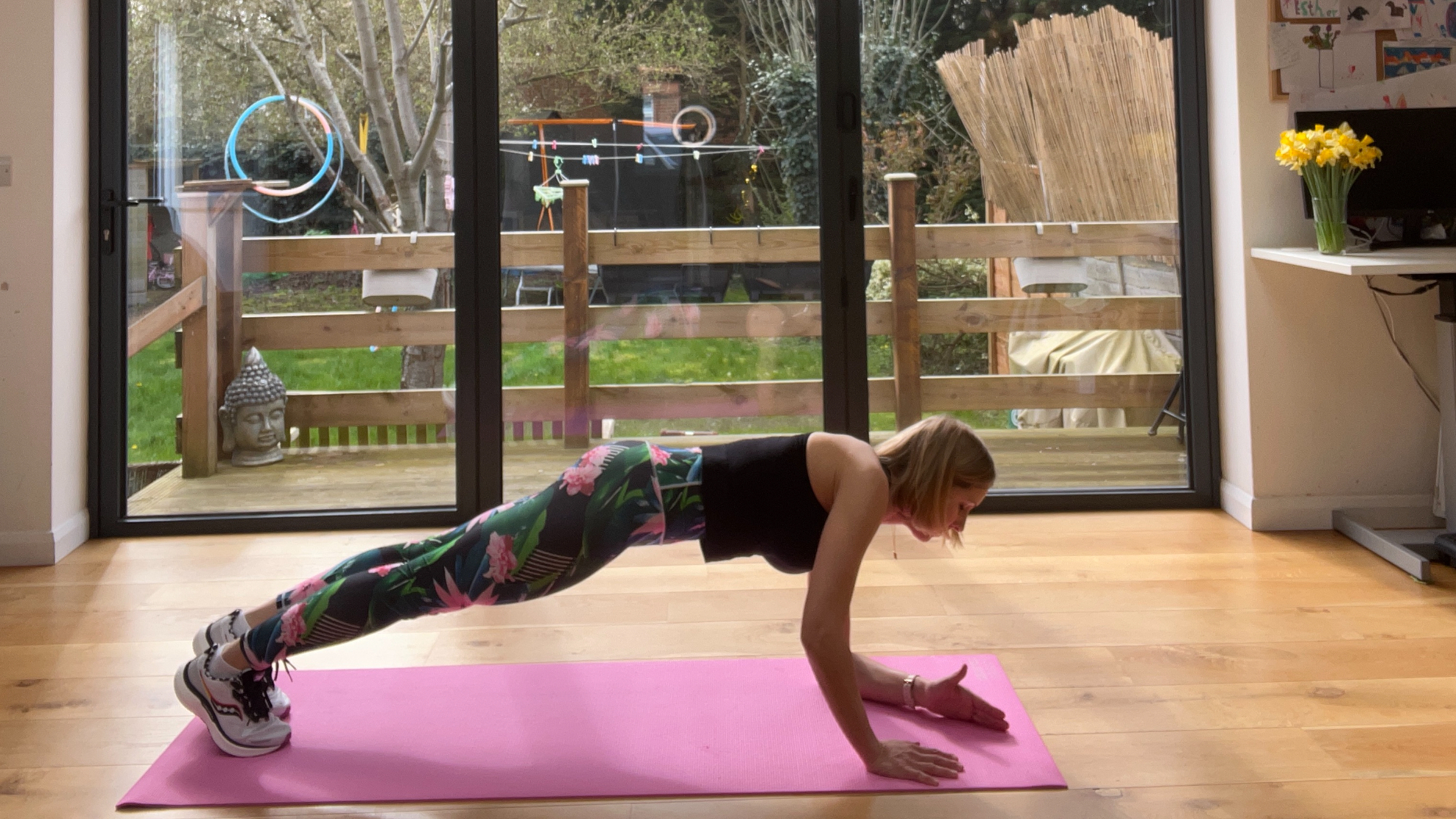

- Start in a plank position, with your hands shoulder-width apart, your back flat, and your shoulders above your wrists.
- Lower your right elbow to the mat, then your left, coming into a low plank hold.
- Hold this position for a few seconds, then place your right hand on the mat and straighten your right elbow.
- Do the same on your left side to return to a plank position.
- Repeat this pattern for 30 seconds.
This routine is designed to help keep your body moving and should help reduce the severity of menopause symptoms like tiredness, low mood, and weight gain.
High-intensity routines are ideal for managing your weight, as the short rests keep your heart rate high, so you burn more energy than during a traditional steady-paced routine.
And sustaining this elevated heart rate prompts longer-term changes to your metabolism, which is why many people also take on a HIIT workout for fat loss. But this menopause HIIT workout has other benefits.
Exercising for happiness is a legitimate goal, and HIIT is a great way to get your body moving and encourage the release of mood-boosting hormones that can improve your wellbeing.
The food we eat also plays a crucial role in how we feel, so it's worth putting together a menopause diet plan. Importantly, it doesn't need to be restrictive, so you can enjoy some of your favorite foods and support your body through menopause.
Maddy Biddulph is a freelance journalist specializing in fitness, health and wellbeing content. With 26 years in consumer media, she has worked as a writer and editor for some of the bestselling newspapers, magazines and websites in the US and UK.
She is also a qualified L3 personal trainer and weight loss advisor, and helps women over 40 navigate menopause by improving their physical and mental strength. At Maddy Biddulph Personal Training, she runs one-to-one and small group training for menopausal women who want to get fit to ease symptoms and feel like themselves again.
-
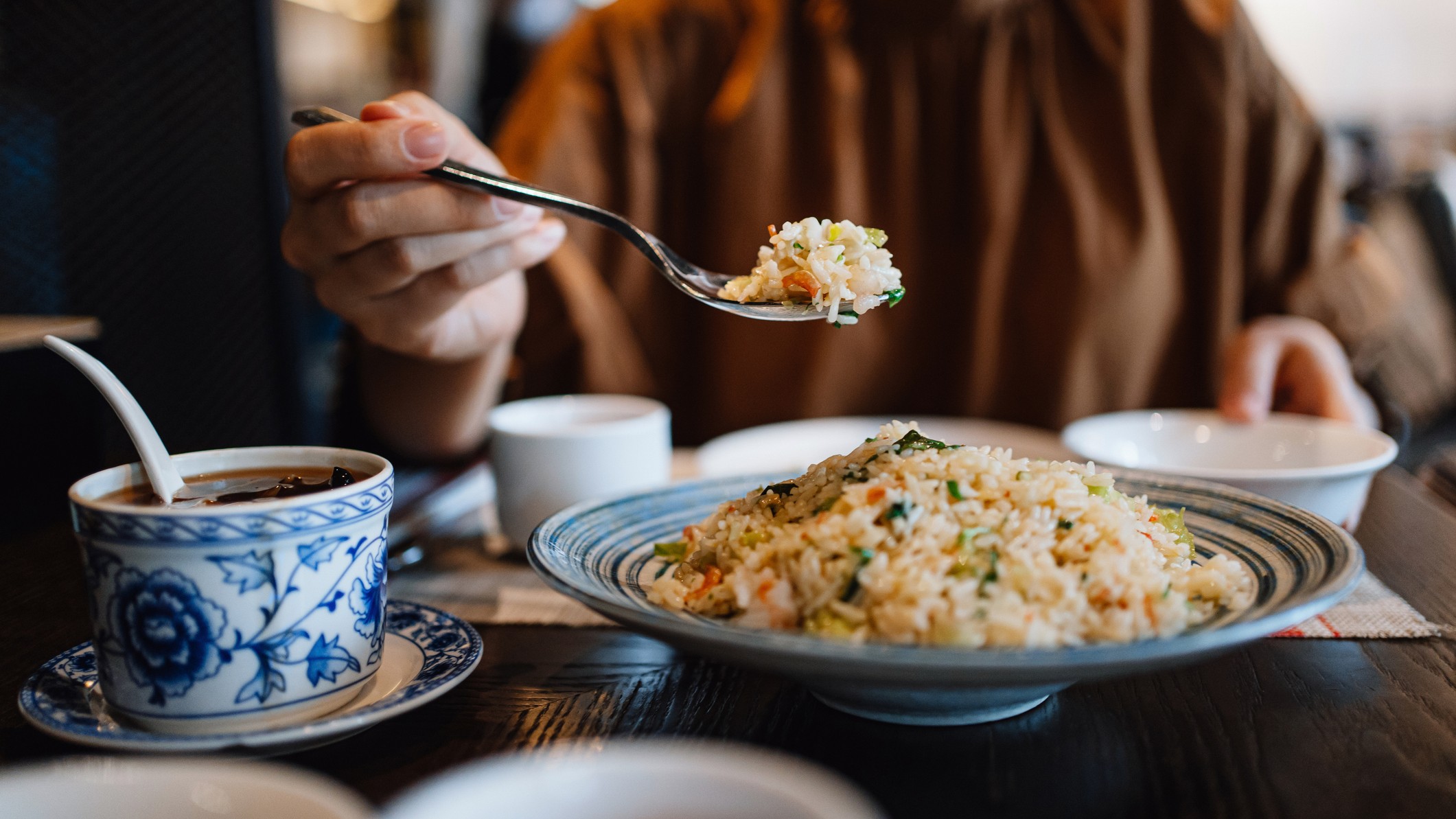 Do your gut a favor with this dietitian's gut-friendly veggie-filled fried rice recipe
Do your gut a favor with this dietitian's gut-friendly veggie-filled fried rice recipeKeep your tummy happy with this flavorful twist on a favorite
By Lou Mudge
-
 I’m a personal trainer and these are some of my favourite exercises to build core and upper body strength at home
I’m a personal trainer and these are some of my favourite exercises to build core and upper body strength at homeAll you need is a set of dumbbells for this kneeling workout
By Maddy Biddulph